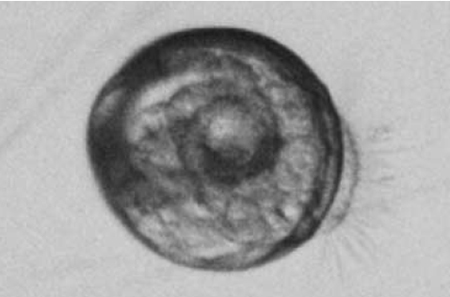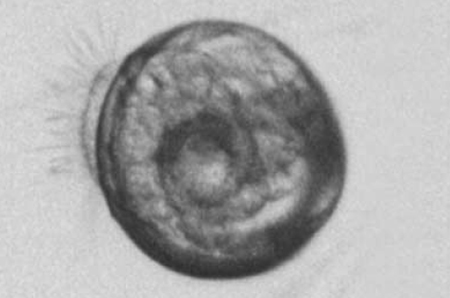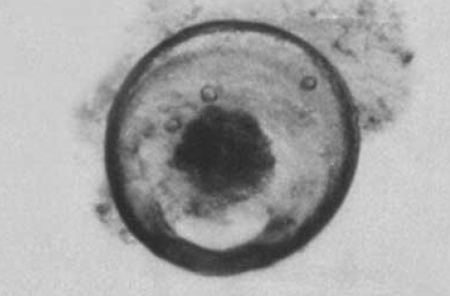A. media and V. alginolyticus can be easily cultured and administered

A common threat to oyster hatcheries around the world is the occurrence of infectious bacterial diseases. Prevention and control of these bacterial diseases traditionally has involved the use of chemicals such as antibiotics and disinfectants. However, the chronic and/or prophylactic use of antibiotics for disease control encourages the emergence and proliferation of resistant bacteria. Furthermore, these resistant bacteria can also transfer their resistant genes to other bacteria.
An alternative to antibiotics is the use of probiotics, a single or mix culture of nonpathogenic bacteria that improve the health and survival of the host organism. They can be applied directly in the feed and/or culture tank as preventive agents.
Experimental setup
The authors recently conducted a study at the University of Technology, Sydney to evaluate two potential probiotics, Aeromonas media and Vibrio alginolyticus, that are active against the Vibrio tubiashii pathogen that affects the larvae of Sydney rock oysters (Saccostrea glomerata).

The trial used 2-day-old Sydney rock oyster larvae cultured in 2-l flasks with a stocking density of 5 larvae per millileter. Water was exchanged every two days using 1-μ filtered seawater. Aeromonas media, V. alginolyticus, and V. tubiashii were inoculated at the start of the trial and after each water exchange.
The potential probiotics were inoculated at a concentration of 104 cells per millileter one hour prior to the addition of V. tubiashii, which had a concentration of 105 cells per millileter. Larvae were fed daily with a combination of Tahitian Isochrysis sp. (T-Iso) and Pavlova lutheri.
Results
No significant differences were found in the survival of oyster larvae treated with A. media or V. alginolyticus to that of the control, which had a mean larval survival of 48-60 percent. However, when the control larvae were subjected to a challenge with V. tubiashii, the mean larvae survival decreased to less than 10 percent. And the larvae that survived the challenge were, on average, smaller in size and less active than the unchallenged larvae.
Larvae challenged with V. tubiashii and treated with either V. alginolyticus or A. media showed a fourfold improvement in survival. They were also larger in size and more active than untreated, challenged larvae.
The concentration of V. alginolyticus increased over the first 24 hours and remained at this concentration for the next 72 hours. In contrast, the concentration of A. media decreased over the first 24 hours to 102 cells per milliliter and then plateaued. After 72 hours, A. media could not be detected in the larval culture – a promising fact, as it performed its function and then disappeared from the larvae, minimizing concerns about product safety and quality.
Additional tests

A second strain of V. alginolyticus isolated from finfish, Val 2, was used as a negative control to determine if the improvement in larval survival was due to the presence of probiotics or simply the presence of bacteria. Val 2 was found to be nonpathogenic to the larvae, but it failed to provide any protection to the larvae when challenged with V. tubiashii.
The mean survival rate of the challenged oyster larvae was also less than 10 percent, similar to that of the nontreated challenged larvae. These findings suggested that both A. media and V. alginolyticus were improving larval survival, directly or indirectly.
The effects of the probionts on the growth and survival of P. lutheri and T-Iso were also investigated. The results showed that neither A. media nor V. alginolyticus had any detrimental effects on the viability and growth of the algae. Similarly, the viability of the probiotics was not affected by the presence of the algae. This suggested that the algae could be used as a vector for introducing the probiotics into the digestive systems of the larvae.
Mode of action
The mode of action of probiotics varies between different strains of bacteria. Some strains of probiotics produce inhibitory compounds, while others compete for nutrients and available energy. In vitro, A. media produces a bacteriocin-like inhibitory substance (BLIS) that acts against a number of known pathogens, including vibrios and aeromonads.
However, in vivo, BLIS could not be detected from the culture water. Hence, improvement of larval survival may or may not be related to BLIS. In contrast, no inhibitory substances were detected from V. alginolyticus in vitro. However, in vivo, V. alginolyticus has always been the dominant microflora in the culture system after 24 hours. This suggests its mode of action may possibly be the result of competition.
Prevention versus treatment
The emphasis in disease management should be on disease prevention, not treatment of symptoms. Prevention of disease can be achieved through good husbandry and management of the hatchery.
It is often difficult to predict when an outbreak will occur; hence, if these two probiotics can be established, either individually or together, as the dominant microflora in the culture system before pathogen invasion, the risks of bacterial outbreaks should be reduced or eliminated. Furthermore, the use of these two probiotics is also likely to be cost-effective, as it can eliminate the use of chemicals, and these probiotics can be easily cultured and administered.
Conclusion
Studies found A. media and V. alginolyticus to be prime candidates as probiotics for use in oyster hatcheries. They are nonpathogenic to, and provide protection for the larvae against pathogens; do not affect the larval feed; and can be easily cultured and administered.
(Editor’s Note: This article was originally published in the June 2003 print edition of the Global Aquaculture Advocate.)
Now that you've finished reading the article ...
… we hope you’ll consider supporting our mission to document the evolution of the global aquaculture industry and share our vast network of contributors’ expansive knowledge every week.
By becoming a Global Seafood Alliance member, you’re ensuring that all of the pre-competitive work we do through member benefits, resources and events can continue. Individual membership costs just $50 a year. GSA individual and corporate members receive complimentary access to a series of GOAL virtual events beginning in April. Join now.
Not a GSA member? Join us.
Authors
-
Cheok Keong Tan, B.Sc.
University of Technology, Sydney
Corner Westbourne Street and Pacific Highway
Gore Hill, 2065 N.S.W., Australia[117,97,46,117,100,101,46,115,116,117,64,110,97,116,46,107,46,107,111,101,104,99]
-
Lewis F. Gibson, Ph.D.
University of Technology, Sydney
Corner Westbourne Street and Pacific Highway
Gore Hill, 2065 N.S.W., Australia -
Anthony M. George, Ph.D.
University of Technology, Sydney
Corner Westbourne Street and Pacific Highway
Gore Hill, 2065 N.S.W., Australia
Tagged With
Related Posts

Responsibility
A look at various intensive shrimp farming systems in Asia
The impact of diseases led some Asian shrimp farming countries to develop biofloc and recirculation aquaculture system (RAS) production technologies. Treating incoming water for culture operations and wastewater treatment are biosecurity measures for disease prevention and control.

Health & Welfare
A study of Zoea-2 Syndrome in hatcheries in India, part 2
Indian shrimp hatcheries have experienced larval mortality in the zoea-2 stage, with molt deterioration and resulting in heavy mortality. Authors considered biotic and abiotic factors. Part 2 describes results of their study.

Innovation & Investment
Algae innovators aim to freeze out early-stage shrimp losses
A greenhouse in Belgium believes its innovative shrimp feed product, made from freeze-dried microalgae, packs the necessary nutrients for the crustacean’s most vulnerable life stage: the first three days of its life.

Intelligence
Aquaculture has put the oysters back in Oyster Town
Whitstable Oyster Fishery Co. aims to safeguard the English town’s rich oyster tradition. Farming triploid oysters on racks in intertidal zones has made a "massive difference," says the company's managing director.


